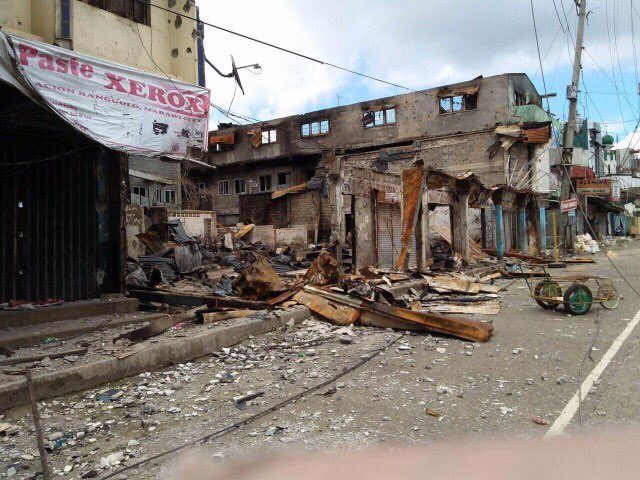SUMMARY
This is AI generated summarization, which may have errors. For context, always refer to the full article.

MANILA, Philippines – Four years since the crippling devastation of Super Typhoon Yolanda (Haiyan) in Eastern Visayas, the Philippines is again facing a mammoth rehabilitation challenge – this time in post-war Marawi City.
Task Force Bangon Marawi (TFBM) is now gearing up to bring back the bustling life in the city that has been the battleground of the war between the military and local terrorists linked to the Islamic State (ISIS).
Ahead of the approval of a comprehensive rehabilitation plan, a group of environmental planners cautioned against a repeat of the slow recovery from Yolanda.
Alliance for Safe, Sustainable, and Resilient Environments (Assure) president Nathaniel von Einsiedel presented on Wednesday, November 29, their observations on Yolanda recovery efforts after working with typhoon-hit communities since 2014.
Von Einsiedel said the major causes for the snail-paced turnaround were mostly rooted in the lack of capacity of local government units (LGUs). These include:
- absence of a proper disaster risk reduction and management plan
- some LGUs invented projects just to spend funds given by the national government
- no clear arrangements for LGU participation
- over-reliance of the LGUs on external support from the national government and international aid
Community consultation
Von Einsiedel said the implementation of programs was very focused on the national government, which caused the delay. National agencies had to attend to Yolanda-related tasks on top of their regular functions without additional staff and funding.
There was also poor coordination on what international non-governmental organizations (NGOs) are doing for a certain area. The roles and responsibilities of the national government, LGUs, and NGOs were not clearly defined.
“We want to share this with the efforts of rebuilding Marawi. We don’t want to see the Marawi rehabilitation and recovery suffer the same consequences that the LGUs of the Yolanda corridor have suffered,” Von Einsiedel said.
Oliver Cam, who served as the focal person of the Tacloban City business community during the Yolanda crisis, strongly advised the government to coordinate with local sectors who have access to resources on the ground.
“You have to be sensitive to the people on the ground. We have more local knowledge and resources that the government never realized we had,” he said.
“Community consultation, those traditional kinds of ways – that gathering consensus, gathering input from the ground is important,” he added.
Culture-sensitive rehabilitation
Sociologist Nona Londonio, a community engagement specialist for the Asian Development Bank (ADB) Yolanda Project, reminded that rehabilitation must be sensitive to the culture and religious beliefs of the different groups in Marawi City.
She called on the government to dig deeper into the cultural and social fabric of the urban community. (IN PHOTOS: The ruins of Marawi)
Professor Glen Lorenzo of the Mindanao State University (MSU) also pointed out that there is a need for rehabilitation that would promote the culture of peace. Lorenzo participated in the academe’s workshop with TFBM for the creation of the rehabilitation plan.
He noted that the Marawi City crisis is different from the Yolanda tragedy because it is a disaster rooted in conflict, not in natural causes.
One way the government can push for peace, said Lorenzo, is to fund the reconstruction of private properties that were bombed in government air strikes used to neutralize the terrorists.
“What is the purpose of rebuilding public utilities if the people, the direct beneficiaries, have some grievances? They (terrorists) just will recruit people to destroy your structures,” he said.
“If the government does not even compensate for the private properties, it will imply that the citizens are at fault for the war.”
Combat operations ended in the southern city on October 23 after 5 long months of intense fighting. (TIMELINE: The ‘liberation’ of Marawi)
Housing and Urban Development Coordinating Council (HUDCC) chief Eduardo del Rosario was appointed as chairperson of TFBM. Del Rosario was the executive director of the National Disaster Risk Reduction and Management Council (NDRRMC) during the Aquino administration.
The housing czar on November 20 issued a memorandum ordering the National Economic and Development Authority (NEDA) to lead the formulation of the Bangon Marawi Comprehensive Rehabilitation and Recovery Program (BM-CRRP).
Based on the memo, the BM-CRRP must be completed by March 21 next year. – Rappler.com
Add a comment
How does this make you feel?
There are no comments yet. Add your comment to start the conversation.